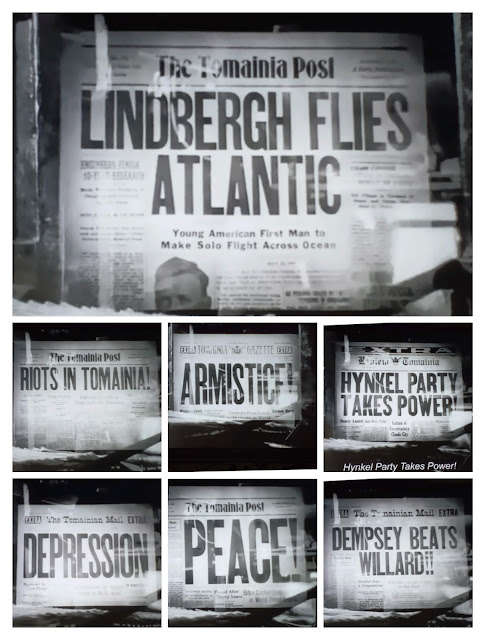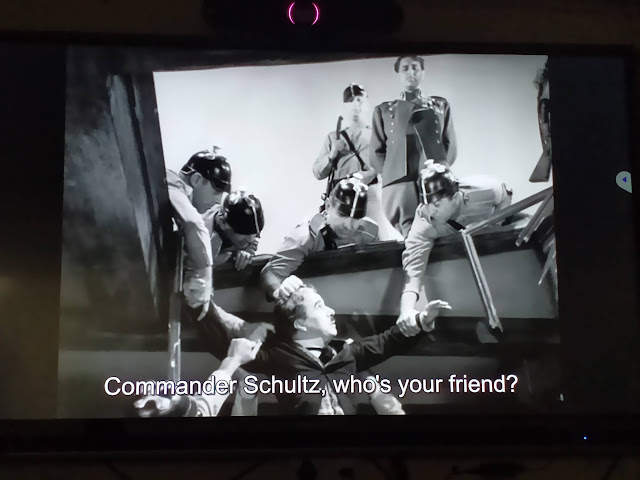Thinking Activity
Understanding Zeitgeist of the 20th Century: From Modern Times to the era of Great Dictators
This blog is prepared as a part of a thinking activity to understand the Zeitgeist of the 20th Century: From Modern Times to the Era of Great Dictators.
In this blog I am going to discuss major characteristics of the 20ty century and its emergence 'The Great Dictator'.
Introduction to the Film:
The Great Dictator is a 1940 American anti-war political satire black comedy film written, directed, produced, scored by, and starring British comedian Charlie Chaplin, following the tradition of many of his other films. Having been the only Hollywood filmmaker to continue to make silent films well into the period of sound films, Chaplin made this his first true sound film.
In the film, scenes featuring Hynkel, the dictator, are narrated like a radio commentary. This style mimics real-life political broadcasts, satirizing the bombastic nature of leaders' speeches and their control over public perception through mass media.
For detailed reading of movie visit this page.
Here you find explanation of frames.
1. World War:
This frame is showing depiction of a war scene with wooden structures leading towards a cave, symbolizing a refuge from the conflict. The line might represent safety or a hidden sanctuary amidst the chaos of war.
A big war weapon in a scene symbolize the destructive power or impact of war, the imbalance of power between conflicting sides, or the escalation of conflict to a more significant and dangerous level. It might also represent the technological advancements in warfare or the threat posed by such weaponry.
This frame scene with debris flying after a blast unequivocally symbolizes the chaos, destruction, and immediate impact of violence and conflict. It represents the devastating consequences of war on both the environment and people's lives.
The depiction of people giving commands to each other instead of working independently suggests a power imbalance. It symbolizes hierarchical structures or authoritative systems where directives are issued, indicating a lack of autonomy or equality among individuals. This could represent a situation where authority figures exert control over others' actions or decisions.
This frame is showing person (Charlie) surrounded by a fog of war symbolizes isolation, vulnerability, and the challenge of navigating through uncertainty and chaos without clear guidance or support.
This frame showing through a fencing with war scenes symbolizes the disconnect between power and the reality of conflict. It suggests a leader or authority figure distanced from the actual turmoil and struggles of war, portraying a sense of detachment or separation from the harsh realities faced by those amidst the battles and chaos.
2. Mobocracy and Dictatorial Democracy:
This frame filled with long lines of soldiers symbolizes the mass mobilization, unity, and collective strength of an army or military force. It represents the sheer scale and magnitude of manpower involved in warfare, emphasizing solidarity, discipline, and the unified effort of soldiers working together towards a common goal or mission.
3. Dictatorship:
The image of a dictator addressing the people symbolizes authoritative control, manipulation of public opinion, and the concentration of power in the hands of a single leader. It signifies the imposition of one individual's ideas, often reflecting a lack of freedom, suppression of dissent, and the dominance of a singular narrative or ideology. As A.C. Ward mentioned about Dictatorial intellectualism, emotionally unsuseptable youth easily manipulated by Dictators. Moreover, due to that they attacked writers or individuals who talked against them, it resulted in Dictatorial intellectualism. Writers started eascping (Escapism) and write work which is more complex in nature. For example, James Joyce in Ulessys and T.S. Eliot in The Waste Land used Complex language and narrative techniques.

The scene of a falling dictator from a staircase, despite its humorous aspect, symbolizes the downfall or loss of power of an authoritarian leader. It represents the collapse of a regime or the end of a period of control, indicating a shift in the balance of power and the potential for change or liberation from oppressive rule.
This frame is showing how dictator is trying to proved himself to be innocence. Throughout history, having photos with children has been a tradition, both ancient and prevalent in the modern world. Political leaders, including dictators, often use these photos to display apparent concern for children's welfare, even though the children might not grasp the situation. This practice persists in the 21st century, revealing how this tradition of showcasing affinity with children continues among leaders, passing down through generations.
In this frame the shop with a hateful inscription "Jew" symbolizes anti-Semitism and discrimination. It signifies the historical persecution, prejudice, and bigotry faced by Jewish communities. This imagery represents the manifestation of hatred and intolerance towards a specific group based on their religious or ethnic identity.
The scene of police attacking a Jewish person from all sides symbolizes systemic oppression, discrimination, and persecution faced by certain communities. It represents the abuse of power and the targeting of individuals based on their ethnicity or beliefs. This imagery may highlight historical or contemporary instances of injustice, violence, and the disproportionate use of force against marginalized groups.
This frame is showing large dictatorial house of Hynkel. He is tiny creature among concrete walls with sign.
This frame is showing exhibitionism. He doesn't value artists and believed in advertisement.
The frames depict the behind-the-scenes reality of a treaty. The camera captures various facets of the leader: publicly authoritative, yet privately engaged in childish squabbles driven by personal greed for power, fighting amidst food. Meanwhile, soldiers are depicted engaged in battles on the border.
A plane turned upside down can symbolize chaos, disaster, or the loss of control. It might represent a moment of crisis, upheaval, or a dramatic shift from stability to turmoil.
The repeated promotion of only familiar people in a frame can symbolize nepotism, favoritism, or a lack of diversity and opportunity. It might represent a system where individuals with existing connections or privileges receive preferential treatment, limiting the inclusion of new perspectives or talents. This imagery could critique the exclusion of deserving but unfamiliar individuals from opportunities due to biases or unfair practices.
The depiction of Hynkel playing with the world using dictatorial ideas symbolizes the manipulative and domineering nature of authoritarian leaders. It signifies the dangerous impact of dictatorial ideologies on a global scale, portraying how such leaders wield power and influence to control or manipulate events and people for their own agendas, often at the expense of others' freedoms and well-being.
Both sculptures are positioned in a salute. One is Rodin's famous sculpture, "
The Thinker." These ancient sculptures have been altered by leaders to align with their party ideologies and symbols.
All above frames are directly focusing upon main headlines of the newspaper.
In this frame they are climbing the way of making country liberal from autocratic nation.
The depiction of Hynkel seated on a high chair symbolizes his authority, power, and dominance within the hierarchy. It portrays his elevated status and control over the situation. In contrast, Napolini seated on a lower seat represents subordination or inferiority in this power dynamic. It emphasizes a deliberate positioning to showcase the imbalance of power, where one figure is visibly elevated, exerting control and superiority over the other, who appears subservient or diminished in influence. This imagery underscores the hierarchical disparity and the intentional portrayal of one's dominance over the other.

The depiction of Hynkel with a watch symbolizes his control and influence over time and events. It represents his authority to dictate and manipulate circumstances, indicating that he holds power over the passage of time and the pacing of events. This imagery suggests that Hynkel exercises a level of control and mastery over situations, emphasizing his ability to shape, determine, or even manipulate outcomes according to his will. It underscores the notion of his dominance and command over the progression and timing of various aspects within his sphere of influence.


The imagery of individuals carrying heavy luggage while moving to another city symbolizes their displacement, hardship, and sense of being marginalized within their own country. It depicts the burden of leaving behind familiar surroundings due to despair or adverse circumstances, often forced by social, economic, or political factors. This portrayal highlights the struggles of individuals who feel marginalized or excluded within their homeland, compelled to seek refuge elsewhere due to a lack of opportunities, discrimination, or societal challenges. It emphasizes the emotional weight and difficulties faced by those who are displaced or marginalized within their own nation.
The frame portrays the police exerting their authority by forcibly controlling and detaining an individual. It symbolizes the overpowering control of law enforcement over citizens, demonstrating their ability to restrict freedom and enforce compliance through captivity and physical restraint.
The frame depicts love birds trapped in a cage due to societal oppression, political pressure, and imposed ideologies. It symbolizes the confinement and suppression of personal freedoms, showcasing how external influences restrict individuals' ability to freely express love and live authentically.
The frame portrays how during the world war, a propagandist party held significant control over the entire world, influencing and dictating the narratives. It signifies the pervasive reach and dominance of propaganda, showcasing how this party wielded extensive influence and authority, shaping perceptions and controlling information on a global scale during that period.
I sought assistance from ChatGPT to enhance my comprehension of the frames depicted.
Click here for the Frame Study of The Modern Times by Charlie Chaplin
Thank you.
Words : 1550
Image : 31
Reference:

































No comments:
Post a Comment